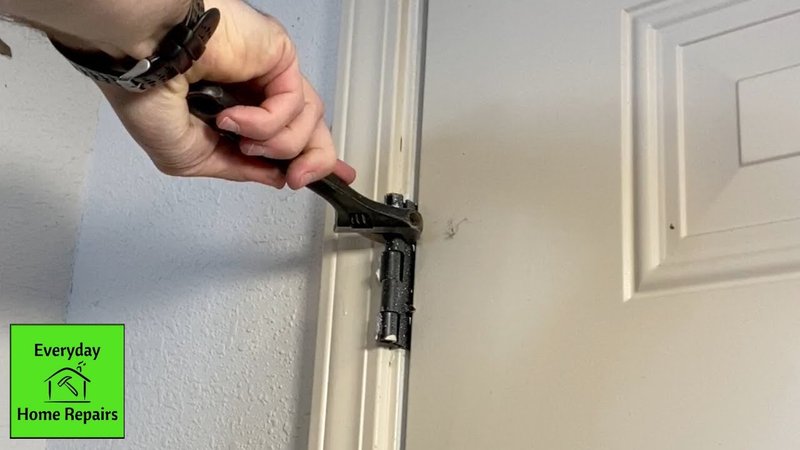
Let’s break this down. When you clean hardware like doorknobs, locks, or hinges, you’re probably using a cleaning solution—be it a natural mix or a commercial cleaner. But sometimes, these solutions can leave behind residues that not only fail to clean but also worsen the stickiness over time. So, why does this happen, and how can you fix it? Let’s dive into it.
What Causes Sticky Residue on Door Hardware?
Sticky residue on door hardware typically comes from cleaning products or environmental factors. For instance, many commercial cleaners contain ingredients that might not rinse off completely, leaving a film behind. This happens when:
- Surfactants in cleaners bind to dirt and grime but don’t wash away fully.
- Oils from your hands can mix with residues, creating a sticky layer.
- Water and humidity can lead to mineral buildup if not dried properly.
Let’s say you used a multi-surface cleaner that is meant for glass but applied it to a metal doorknob. The surfactants in that cleaner cling to the knob, especially if it’s not designed for that surface. This sticky residue can attract dust and dirt, making it feel even more unpleasant.
Choosing the Right Cleaning Products
To combat stickiness, it’s vital to choose the right products. Not every cleaner is created equal, and some may actually do more harm than good. Here are some types of cleaners you might consider:
- Natural Cleaners: Vinegar and water or a simple soap solution may be less likely to leave residues.
- Specialized Hardware Cleaners: These are formulated for specific materials, whether they be metal, plastic, or wood.
- Microfiber Cloths: These can help avoid leaving lint or residues behind when cleaning.
You might be wondering, “What makes natural cleaners better?” Well, natural options often lack the harsh chemicals found in commercial products, leaving less chance for sticky buildup. Think of it like opting for fresh ingredients in cooking; you’re likely to end up with a better dish—minus the preservatives.
How to Properly Clean Door Hardware
Cleaning your door hardware isn’t just about wiping it down; it’s a bit of a process. Here’s a simple step-by-step guide to ensure you’re not left with sticky residue:
- Gather Supplies: Get a soft-bristled brush, microfiber cloths, and your chosen cleaner.
- Dust First: Use the brush to remove loose dirt and dust from the hardware.
- Apply Cleaner: Lightly spray or apply your cleaning solution directly to the cloth—never spray directly on hardware.
- Wipe Down: Gently clean all surfaces, paying special attention to crevices.
- Dry Thoroughly: Use a separate dry cloth to remove any remaining moisture.
Here’s the thing: thorough drying is often the step we overlook. Residual moisture can react with grime or cleaners, creating stickiness that can feel impossible to eliminate.
How Environmental Factors Contribute to Stickiness
Environmental factors play a significant role in that sticky sensation. Humidity is a biggie. In humid climates, moisture in the air can encourage gunk to stick to surfaces. Let’s break down how this works:
- Humidity: High moisture levels can cause doors to swell, which might trap sticky substances.
- Temperature Changes: Rapid changes can cause metals to expand and contract, loosening grime.
- Oil and Grease from Hands: Frequent touch points can leave behind oils that mix with dust and cleaners.
Imagine your doorknob as a sponge: when it’s humid, it can soak up more dirt and grease than it would in dry weather, leading to that frustrating, sticky feeling.
Tips for Maintaining Clean Door Hardware
If you want to keep your door hardware clean and sticky-free, there are some simple maintenance tips you can follow:
- Regular Cleaning: A quick wipe down once a month can prevent buildup.
- Use a Damp Cloth: This is often enough for routine maintenance without over-applying cleaners.
- Avoid Over-Spraying: Less is more when it comes to cleaning solutions—aim for a light application.
Also, keep in mind where your hardware is located. Doors that connect to frequently-used areas might need more attention than those that remain less touched.
When to Replace Door Hardware
If you find that cleaning doesn’t resolve the stickiness, it might be time to consider replacing the hardware. Certain materials can degrade over time, making even the best cleaning efforts futile. Here are a few signs it’s time for an upgrade:
- Rust or Corrosion: Visible signs of rust on metal components are often a sign that the hardware is damaged.
- Worn Finish: If the finish is scratched or peeling, cleaning may only exacerbate the problem.
- Frequent Malfunctions: If your door hardware isn’t functioning as it should, replacement might be necessary.
Replacing hardware doesn’t have to be an overwhelming task. Often, it’s a straightforward DIY project. Just make sure to measure accurately!
Final Thoughts on Sticky Door Hardware
Dealing with sticky door hardware after cleaning can be annoying. But by choosing the right products, mastering effective cleaning techniques, and maintaining your hardware regularly, you can keep that stickiness at bay. Remember, environmental factors can be just as much of a culprit as the cleaners you use.
Now you’re armed with the knowledge to tackle that sticky situation head-on. Next time you clean your door hardware, you’ll know exactly what to do to keep it shining and functional!
